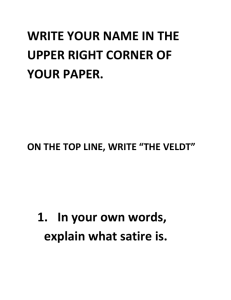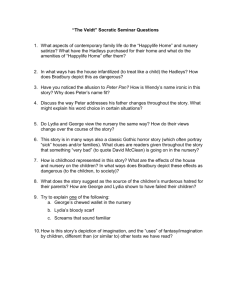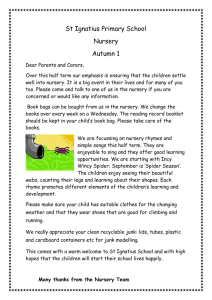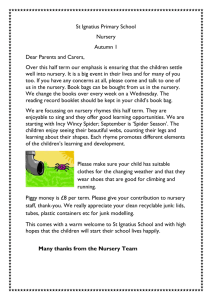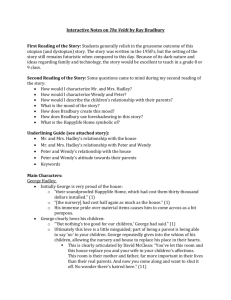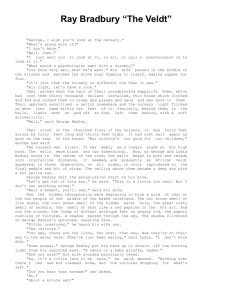english final copy 2
advertisement
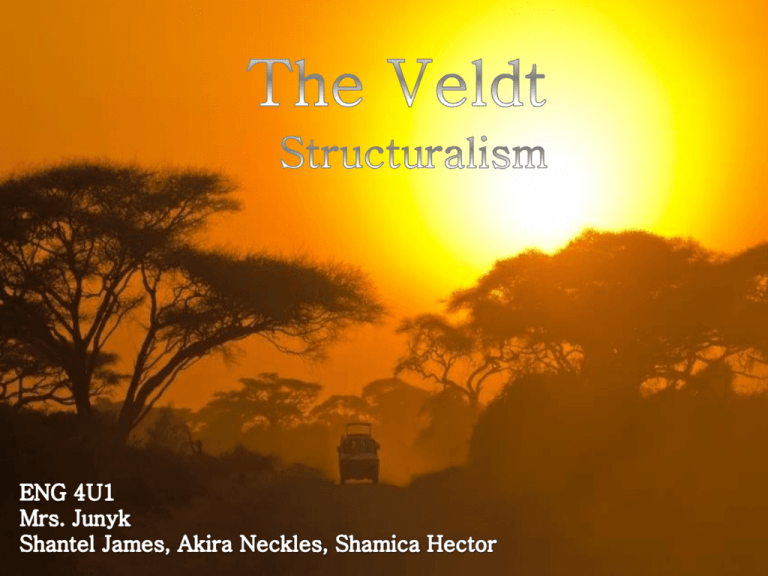
•Famous Practitioners-Claude Levi Strauss, Mary Douglas •Time Period-1940’s to 1970’s •Believes that in order understand cultures you must understand their rules about binary opposites •Binary opposites : humans tend to see things in terms of two forces that are opposite to each other ( night and day, good and evil, female and male) •Binary opposites are defined in a particular culture in a way that is logical to its members •Items are not inherently good or bad but, become so when placed in the right or wrong element Pros •Creates a clear outline of what behaviors are accepted in a culture • By using structuralism you can understand and predict human behavior •Gives clear information of how humans use logic to meet their needs Examples in text: •The children were allowed to imagine Alice in Wonderland, Rima and Aladdin but Africa was not accepted • The nursery was for the good of the children the threatened removal lead to their bad behavior •When threatened with the closure of the nursery Peter and Wendy erased the images of (bad) Africa and replaced it with the (good) Rima Cons •Overemphasize the logic and stability in human society- even though rules are enforced society does not always perform constructively •Only focusing on structural disables the literary devices used in the text. E.g. imagery, personification, semiotics... Examples in text: •Mr. Hadley’s changes in the structure of the household (creating new rules) resulted in the children rebellious behavior. i.e. visions of Africa. • Rules about what was and was not acceptable were put in place but not fallowed by the children. •Instead of imaging fairly tales (good) the children imagined the dangerous veldts of Africa (bad). Questions asked: •What are the main principles that govern the way human mind works? •How are those principles reflected in the way human cultures work ? •Why cultures develop complex rules about where items are good and bad? •Veldt- an elevated open grass land in southern Africa •The veldt challenges the audience to take a further look into the rules of good and bad-binary opposites • The addition of the nursery was initially for the “good” of the household but the increased element of Peter and Wendy’s destructive thoughts turned it into a “bad” thing. •The conflict between the parents and children involving the rules of the household eventually lead to the downfall of the family Name Mr. Hadley Mrs. Hadley Peter and Wendy Mr. McClean Role Dominate father figure (decision maker, i.e. He decides to cut off the nursery) He is unaware of the chaos that surrounds him. Submissive female- alert observer. Mrs. Hadley was always suspicious of how real the nursery felt. Deceiving kids- vivid imagination (plotting the murder of their “parents”) Psychologist- aware of the disaster brewing in the nursery. He was able to convince Mr. Hadley to put a halt on the nursery. Good Bad “One of the original uses of these nurseries was so that we could study the patterns left on the walls of the child’s mind... however, the room has become a channel toward-destructive thoughts” “How often had he seen Pegasus flying in the ceiling or seen fountains or red fireworks...But now, this yellow hot Africa, this bake oven with murder in the heat” The children began to The addition of the use the nursery to create nursery was intended to negative imagery. Leisure be good because it was to time was now filled with Africa, the hot sun and be a place where the murder children could have leisure time Good Bad “ But nothings too good for our children.” “I didn’t like it when you took out the picture painter... I wanted you to learn to paint all by The parents tried to show yourself.” their love to their children by giving them everything they wanted The children were spoiled so when their parents tried to change things they couldn't handle it Good Bad “The house is wife mother now and nursemaid.” “You're beginning to feel unnecessary too.” The intended purpose of the house was to help the family The family depended solely on the house. Without the house they were useless. It also brought tension between the children and their parents. Good Bad They were awfully “Long before you knew young, Wendy and Peter , what death was you were for death thoughts. wishing it on someone else.” It was good that the children were aware of death It was bad that they were so occupied with thoughts of murder (and planed their own parents death) Good Bad “I thought we were free to play as we wished...You are within reasonable bounds. What's wrong with Africa Father?” When rules were enforced the children rebelled( Taking the rocket to New York) and came up with a plot to kill their parents The father tried to establish rules when the children's behaviours began to get out of control (ex. Cutting off the nursery) Good Bad They walked down the hall of their soundproofed, Happy life Home, which had them thirty thousand dollars to be installed...” “How did we get this house? What prompted us to buy a nightmare? Pride, money, Foolishness.” The family had money and were able to take care of themselves financially The parents made bad investments by buying the house and nursery • Colin Bain, Jill Colyer, Dennis DesRivieres, Sean Dolan. 2002. Transitions in Society. University of Oxford: Oxford University Press • Houghton Mifflin Company.2003-2008.The Free Dictionary. Retrieved September 28, 2010, from http://www.thefreedictionary.com/veldt Istockphoto. (2009). Cartoon judge. Retrieved September 28, 2010, from http://www.google.ca/imgres?imgurl=http://www.istockphoto.com/fil e_thumbview_approve/116576/2/istockphoto_116576-cartoonjudge.jpg&imgrefurl=http://www.istockphoto.com/stock-photo116576-cartoonjudge.php&h=314&w=380&sz=42&tbnid=FYdairBU3EgiEM:&tbnh=1 02&tbnw=123&prev=/images%3Fq%3Dcartoon%2Bjudge&zoom=1& q=cartoon+judge&hl=en&usg=__ihDsQ9PpUKejSehYqtJRBYWRCOQ =&sa=X&ei=p7GsTKDZA4G78gaPiMyTCA&ved=0CBoQ9QEwAA •

